Description
This rare pattern officer’s sword clearly shows the commercial collaboration between the early United States and Great Britain on the eve of the War of 1812. The basic style closely follows that of the British P1803 Infantry Officer’s Saber, with gilt cast brass hilt, but clearly with American motif. Instead of the lion head pommel of the British P1803, it features the US eagle head with integral backstrap. In place of the openwork “GR” in the knuckle guard of the British model, it features an openwork pattern of flaming bombs framed in a figure-8 pattern of what appears to be lengths of fuse. The remainder of the guard is of the openwork lattice type identical to the British model. The grip is of carved bone, with base ferrule. The 30” deeply curved blade has a single 3/4-length fuller and features gold-filled engravings of typical early 19th C style, depicting foliage and stands of arms. While there is no maker’s name or mark, this sword is almost certainly an English-made import retailed by the New York firm of Richards, Upson & Company, 145 Pearl Street (1808-1816). George Upson of this firm, was brother to Henry Upson, of Samuel Williams of London, a firm involved in international trade and finance. Richards was likely a close relative of British gun dealer Henry Richards, who was romantically involved with Samuel Williams’ daughter, Caroline. Clearly, this British alliance saw the opportunities of trade with the fledgling nation of the United States. Little did they know that the War of 1812 would break out between the two countries shortly after beginning this business. While this no doubt adversely affected supplies of materials and finished swords to the United States, the firm survived until shortly after hostilities ceased. Included is the original black leather scabbard with sheet brass mounts, featuring throat with frog button, twin carry rings, and middle carry band; the drag missing. Hilt retains about 80% original gilding; there is a repair to the bone grip; blade with scattered patches of light pitting and age staining while retaining traces of the gild filling in the engravings; scabbard with some cracking, a short section of open seam at the bottom, and lacking the drag. Overall length 35 3/4”, not including scabbard. A sword with the same guard, but lacking the backstrap, is illustrated and described in “The American Eagle-Pommel Sword, the Early Years 1794-1830”, by E. Andrew Mowbray, Fig. 2.C., page 67.

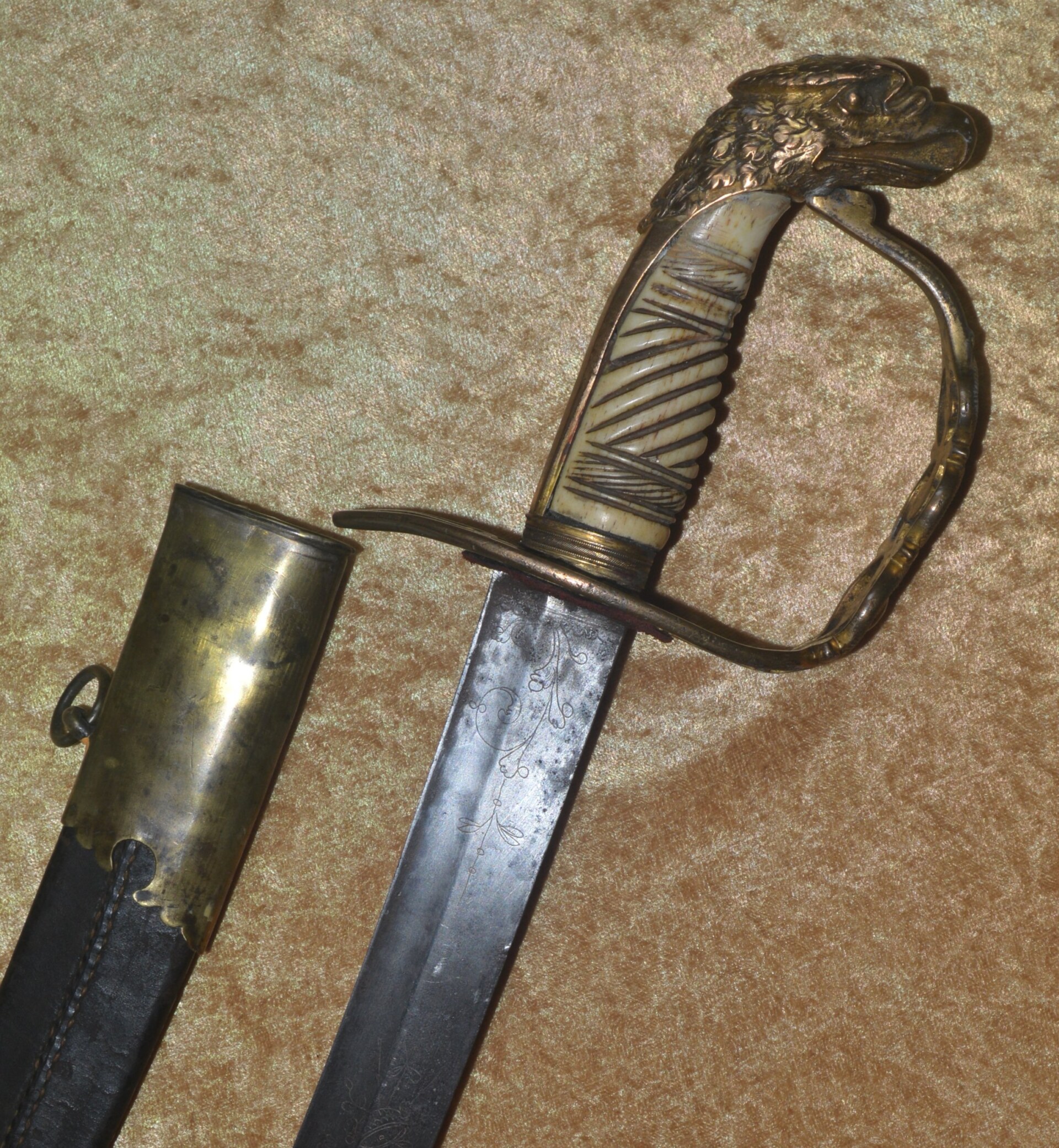
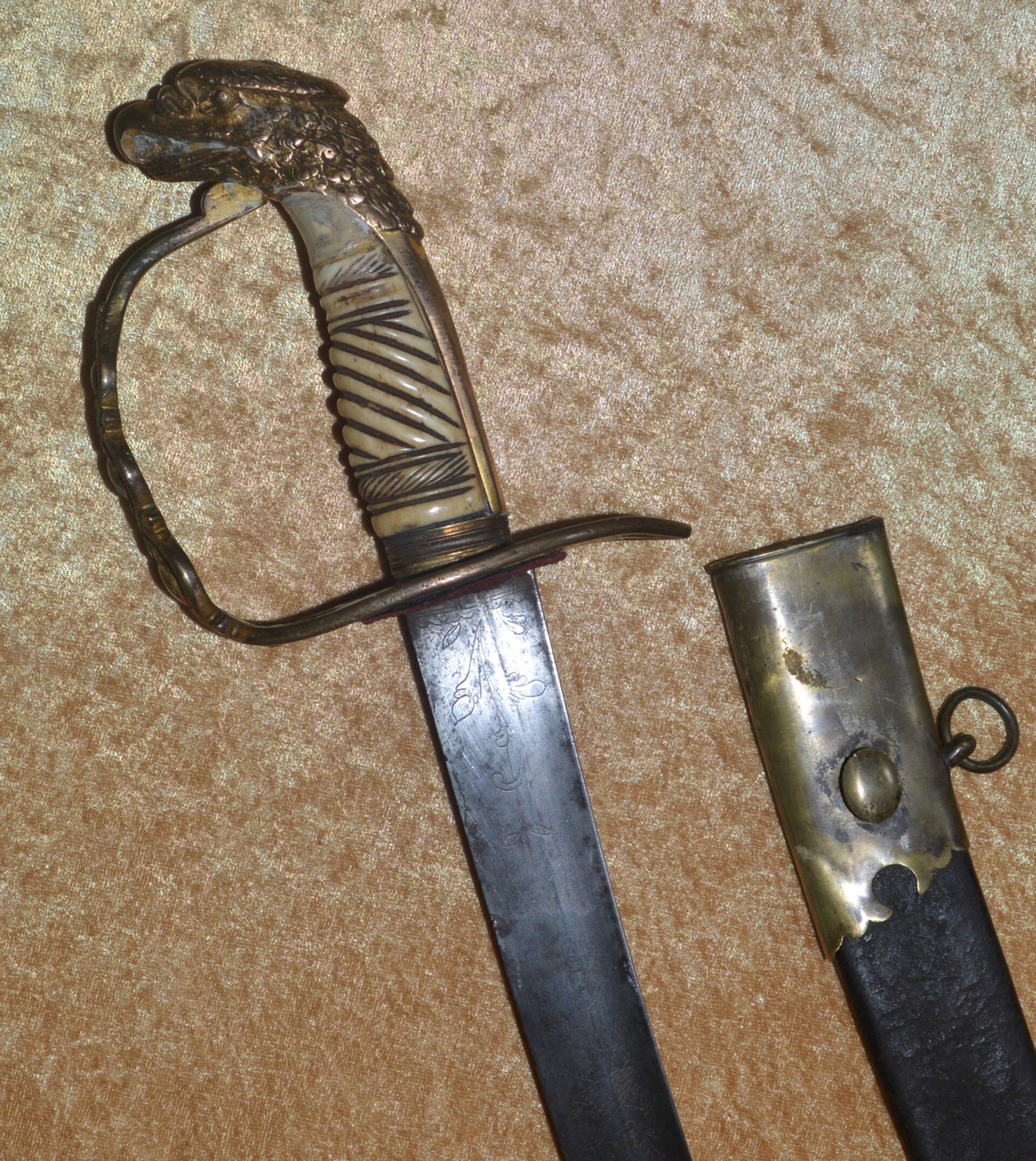
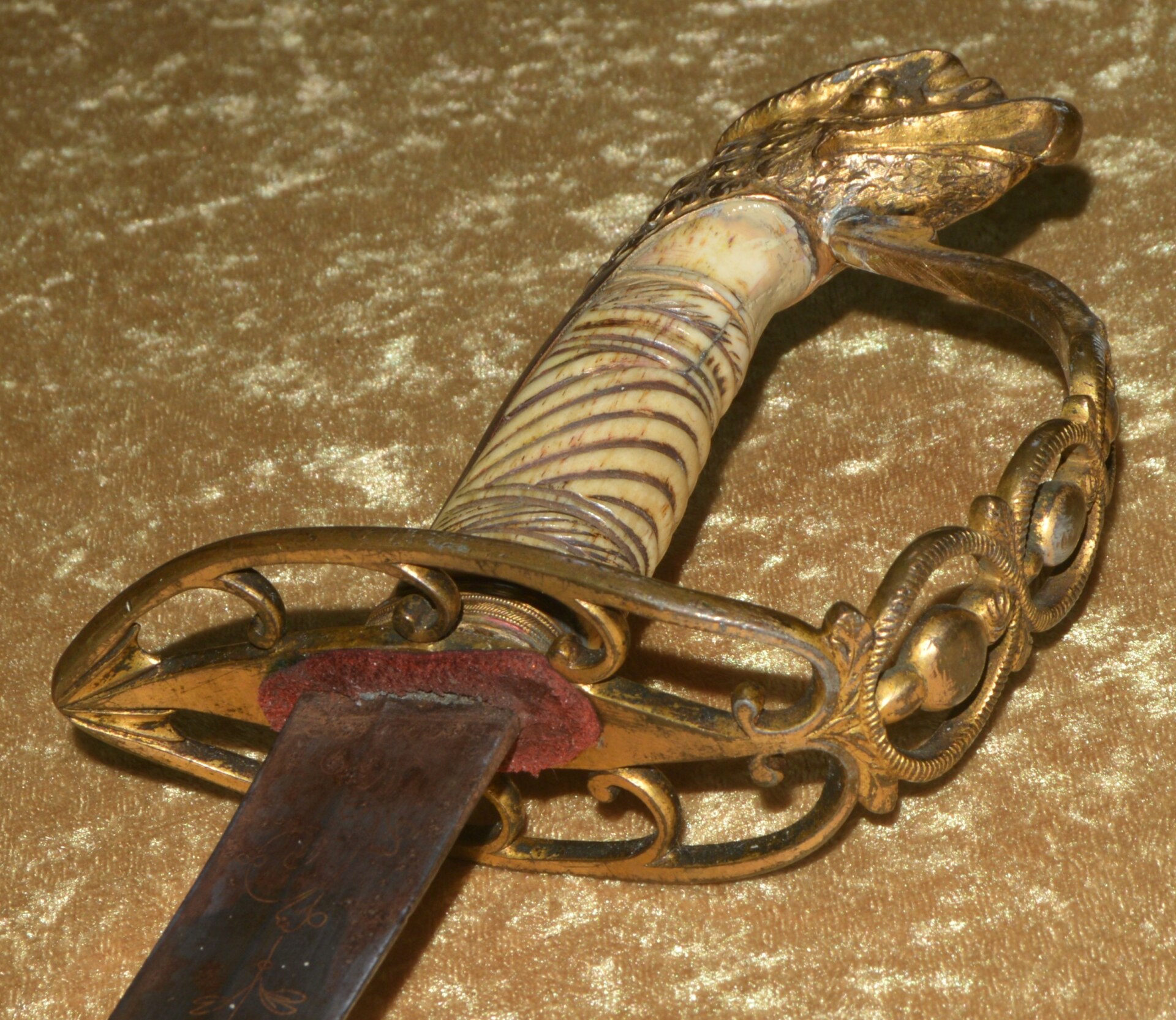
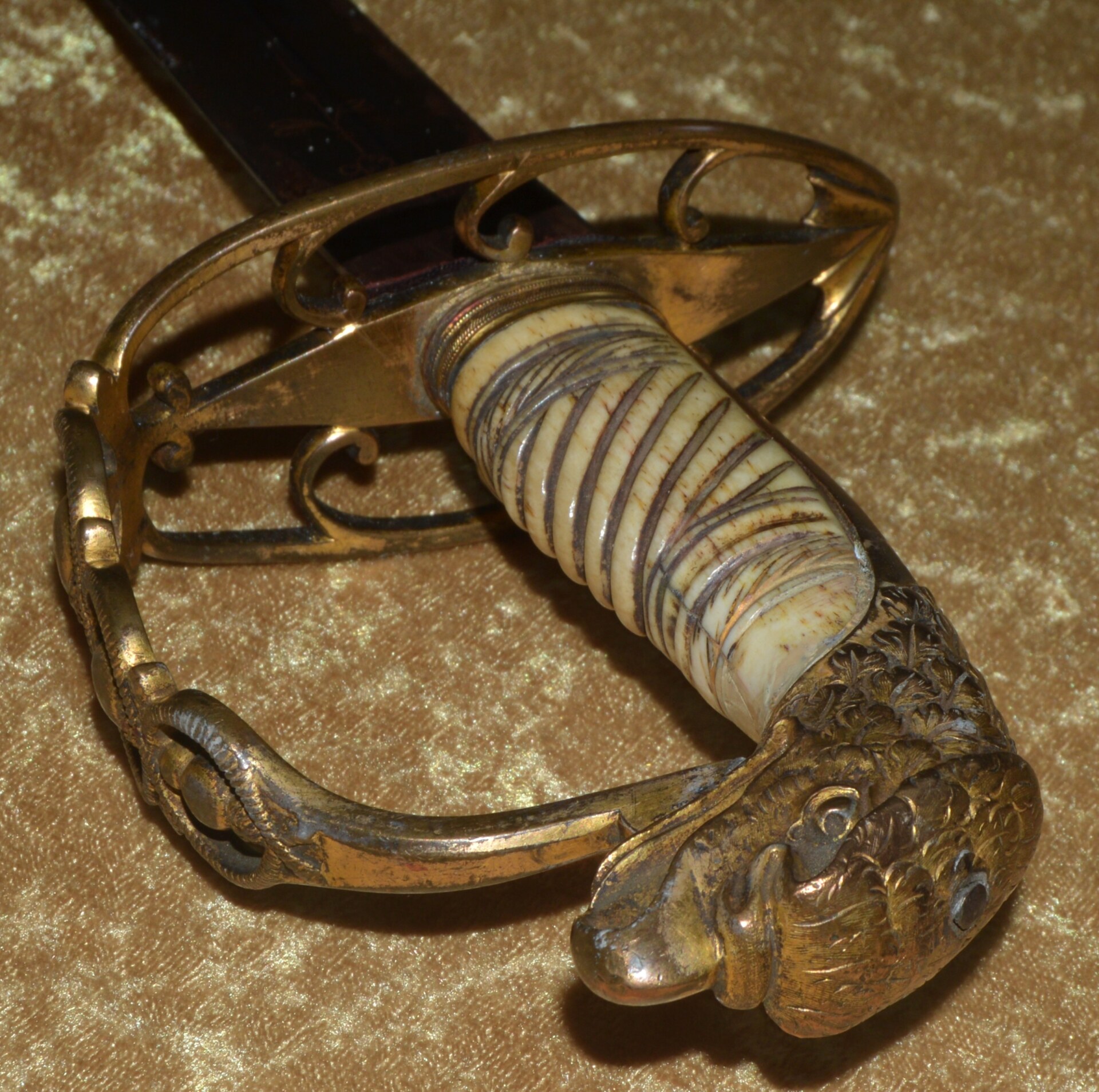
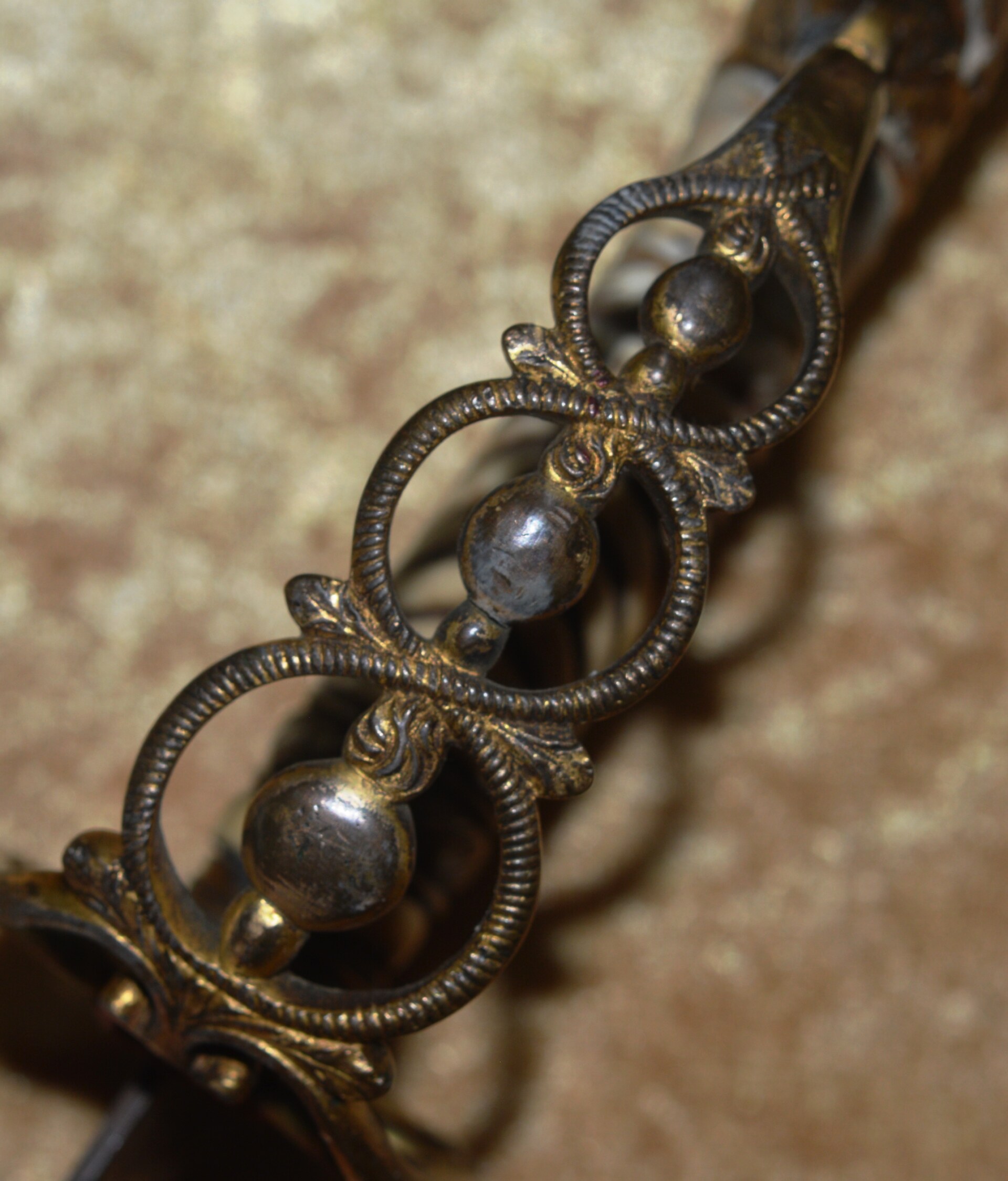
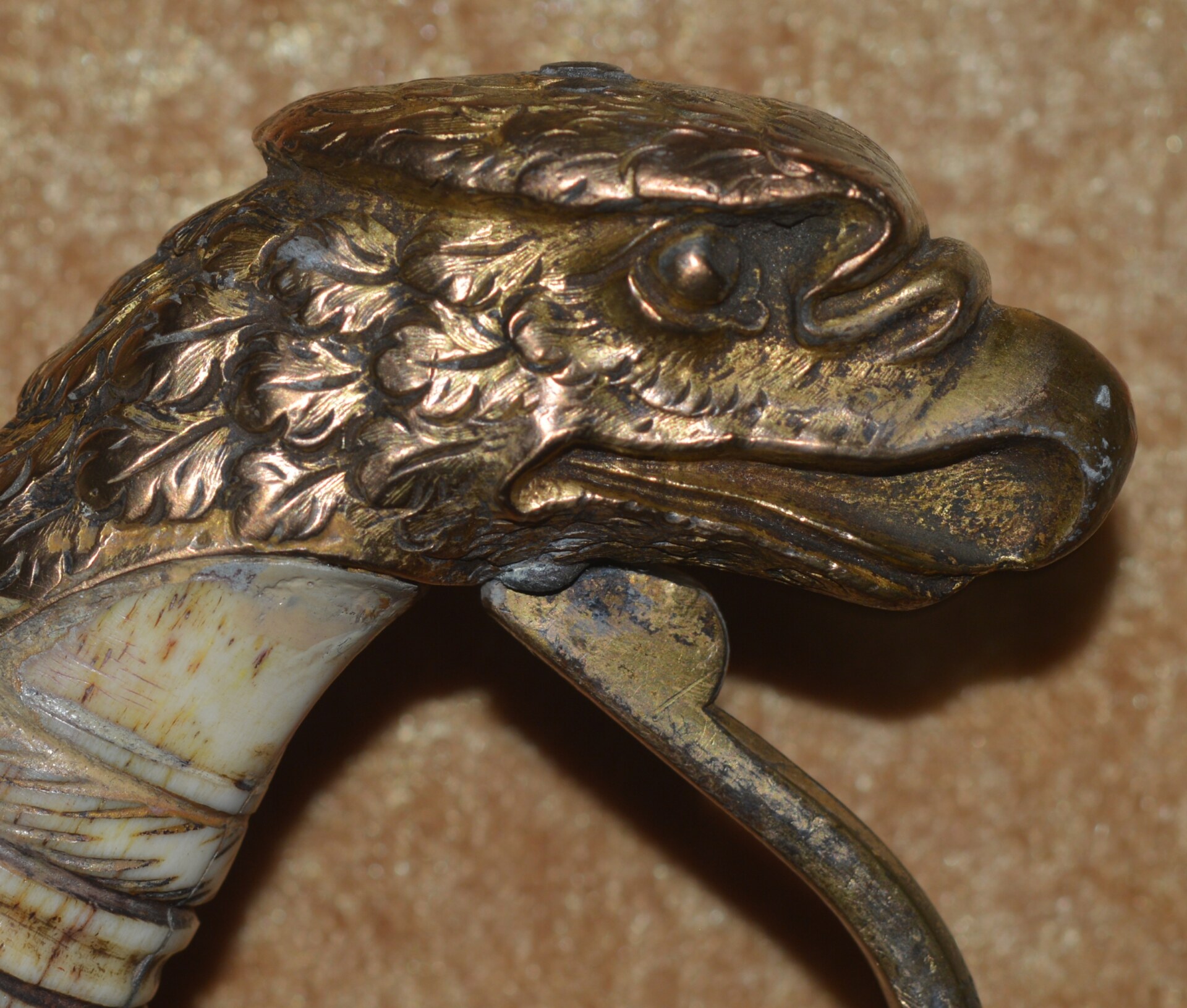
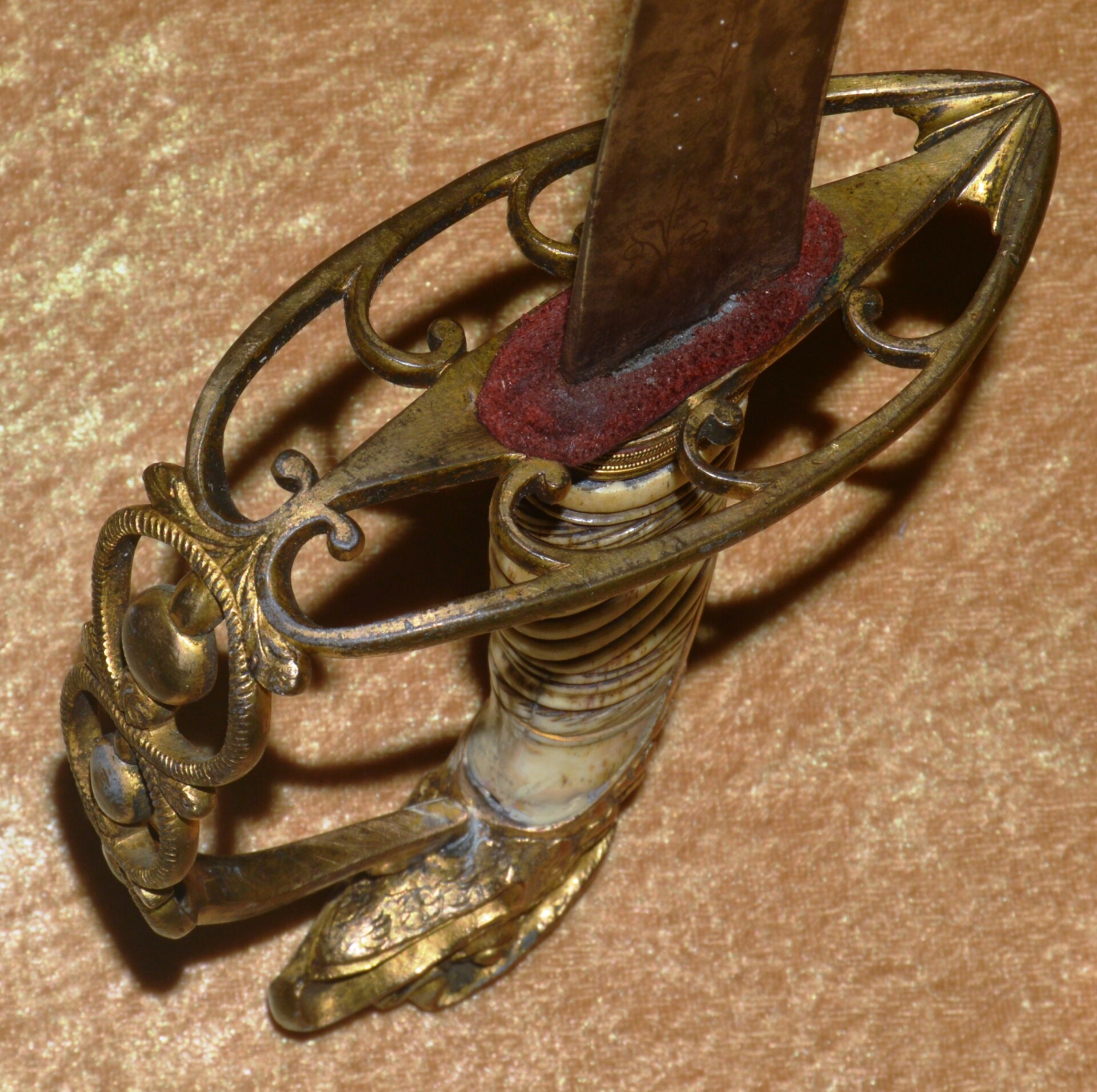
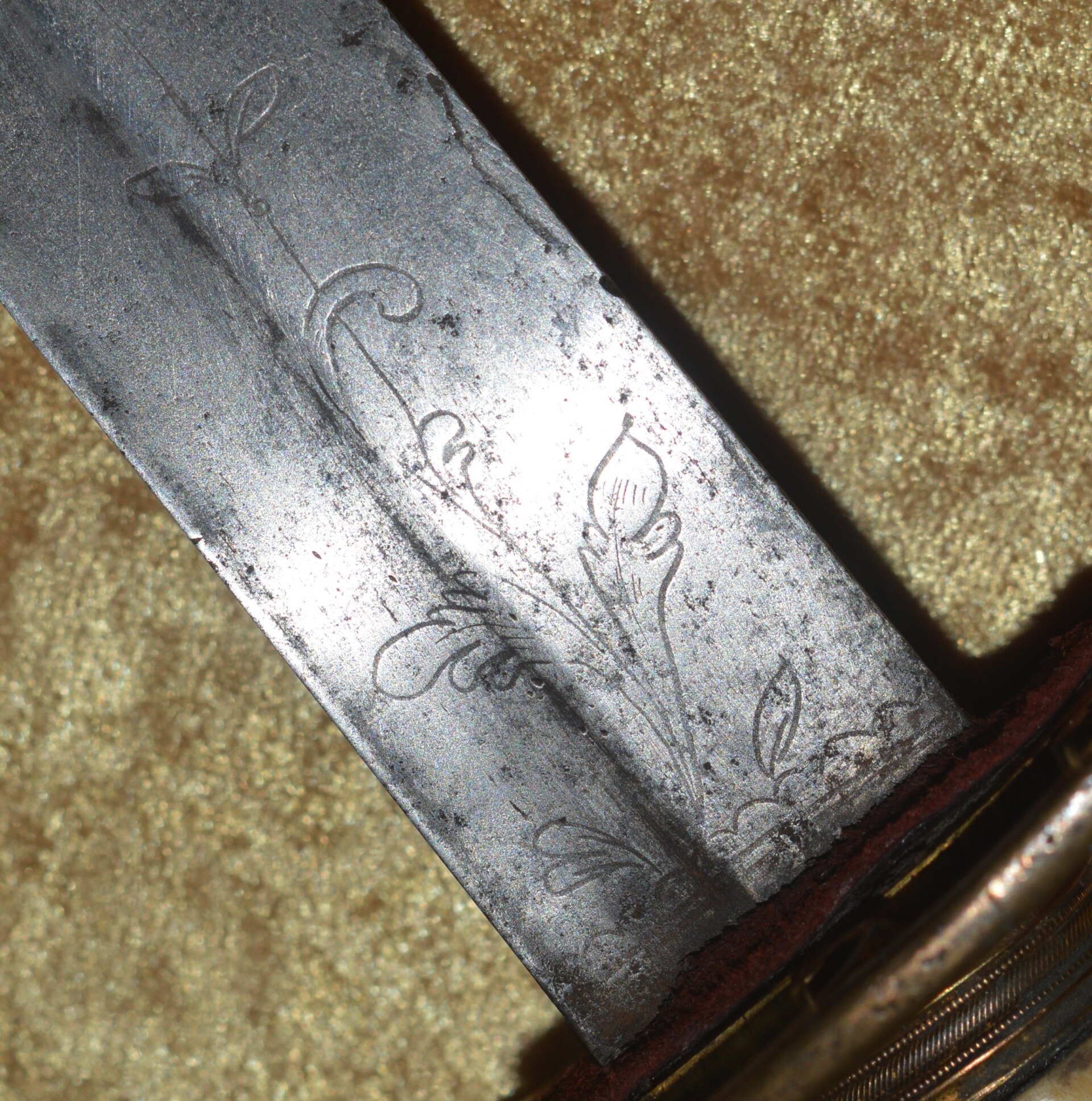
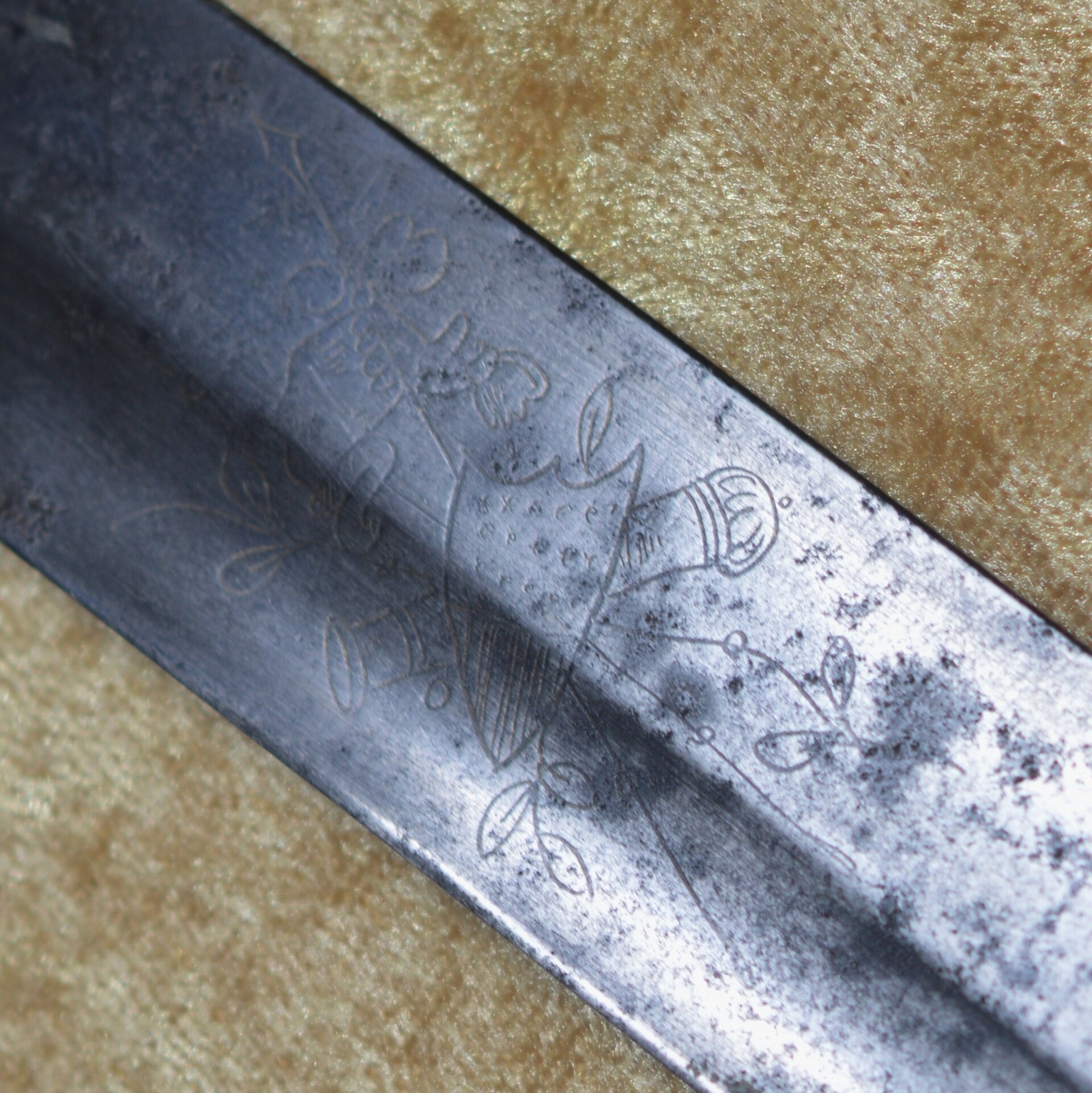
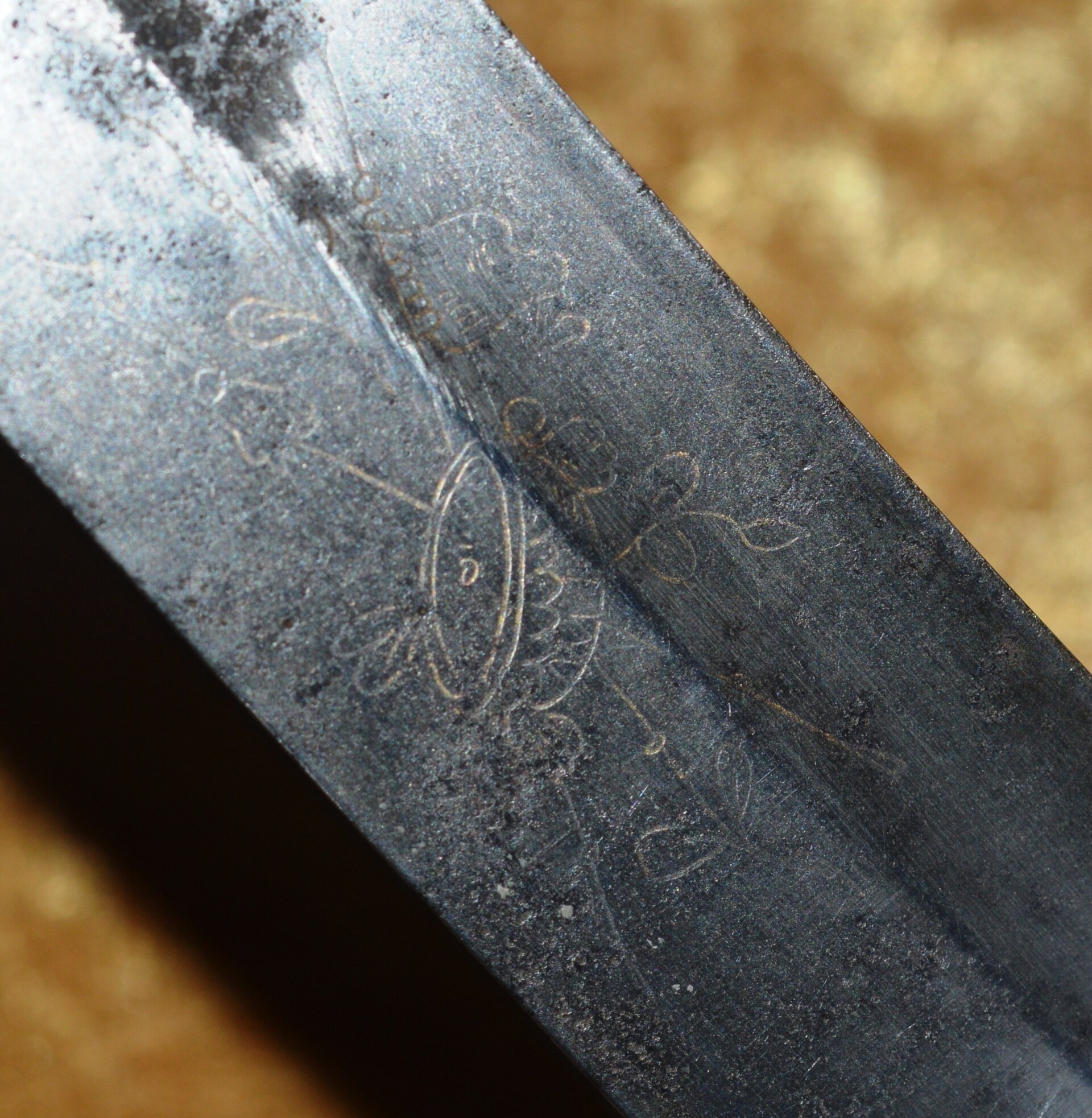
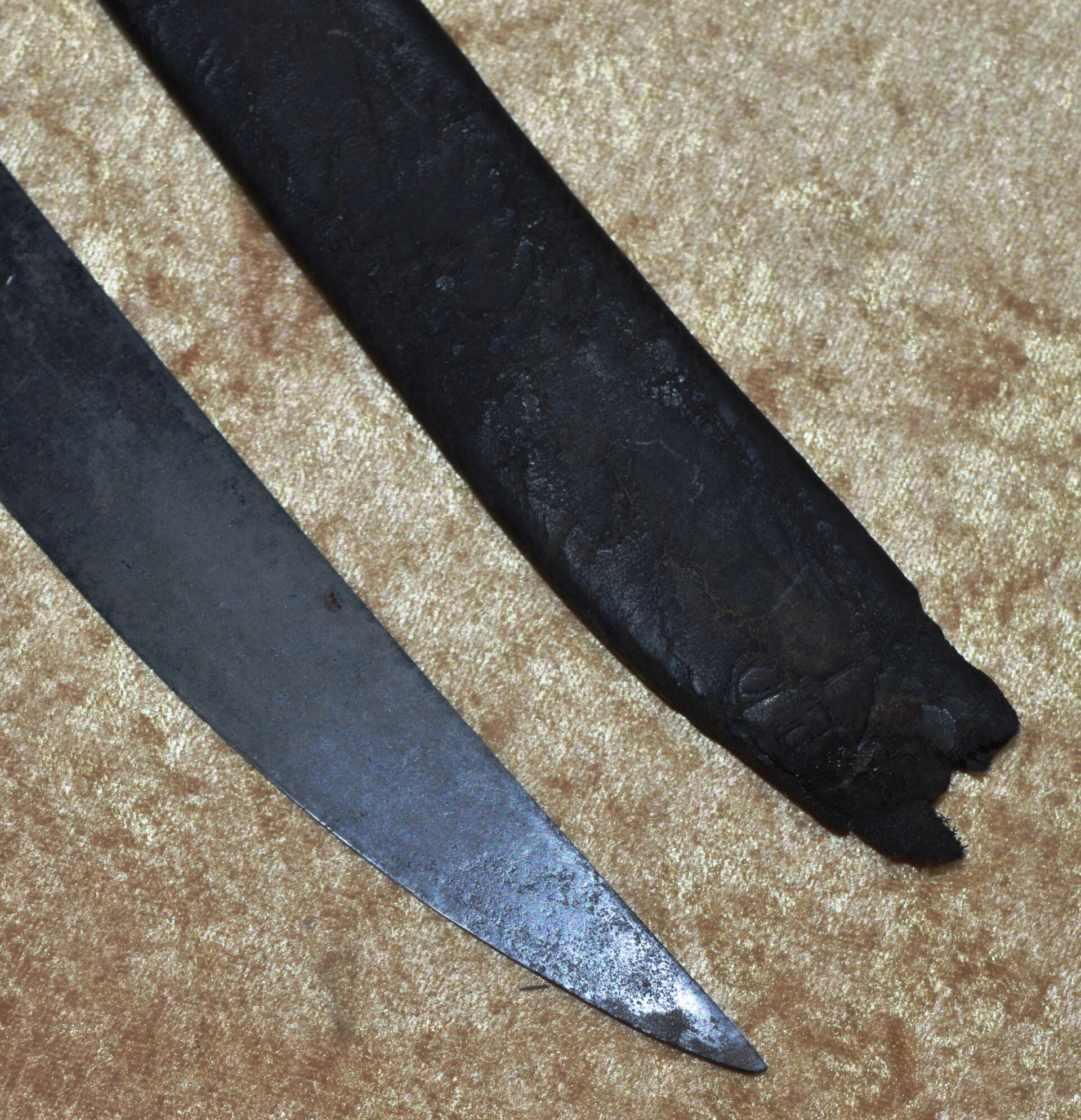
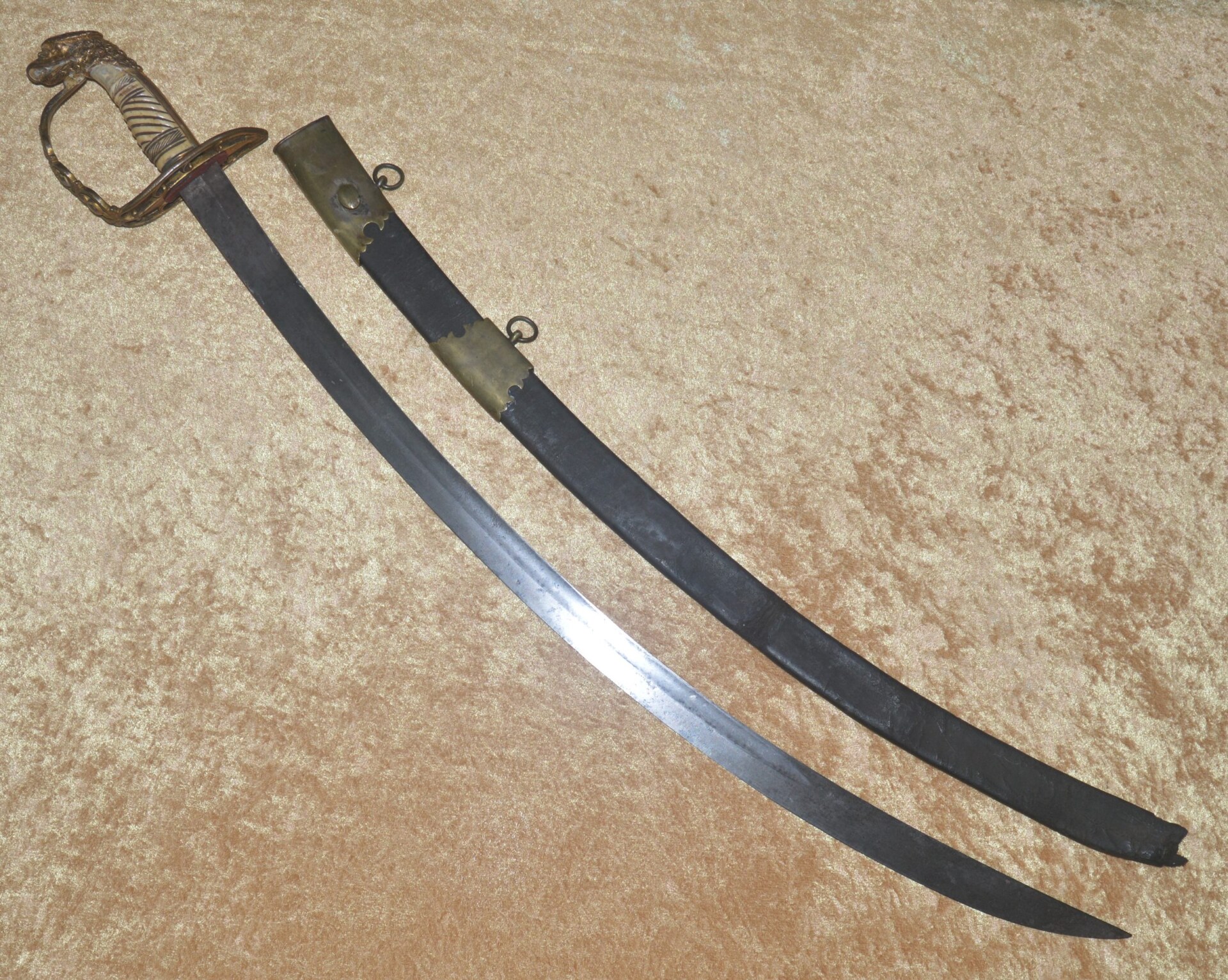
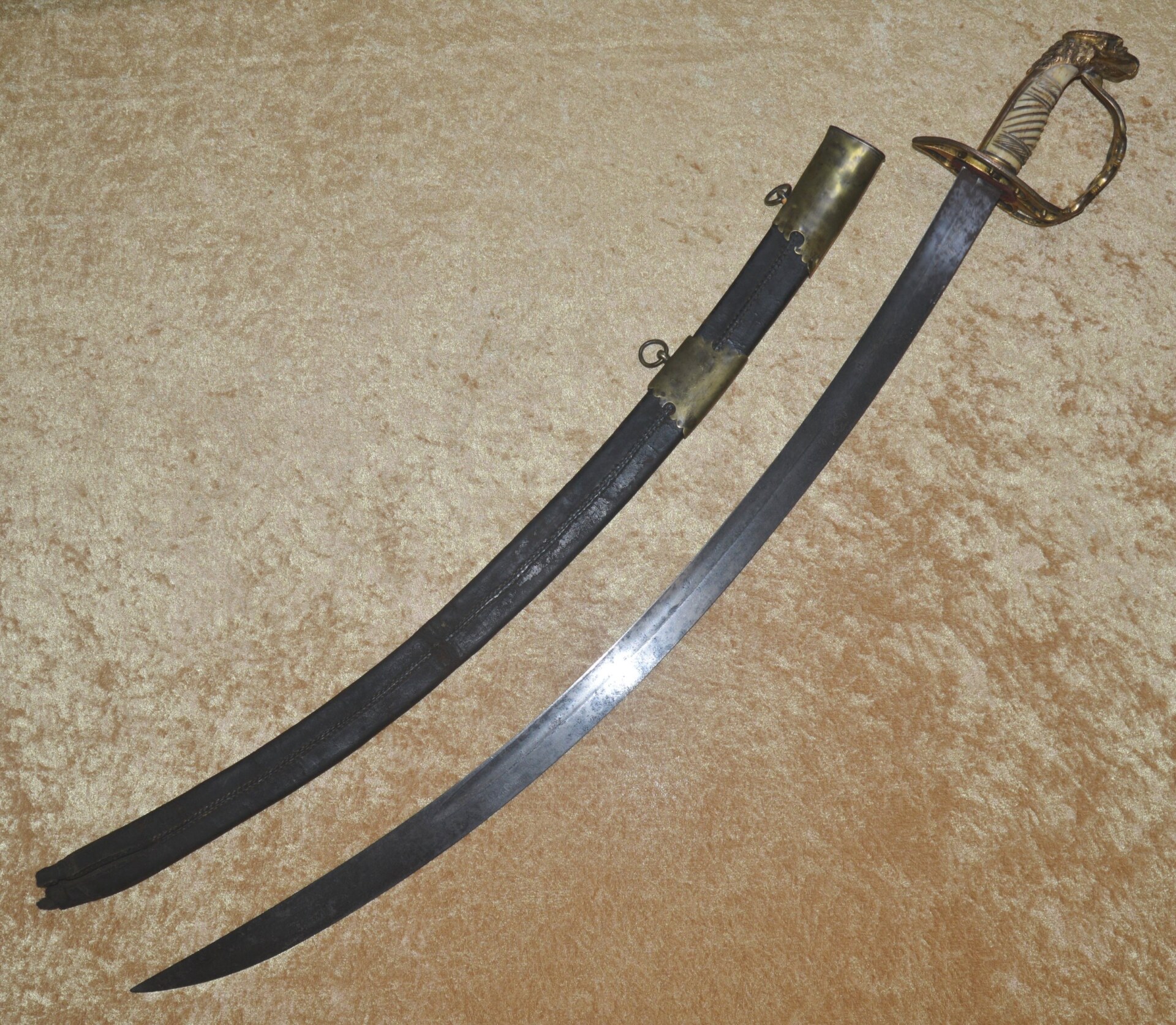

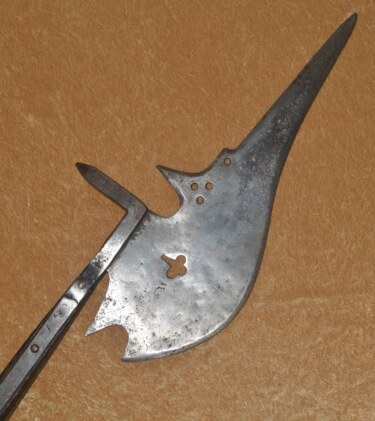 Rare German Halberd Axe, Late 15th C
Rare German Halberd Axe, Late 15th C  WWII Nazi Army Enlisted Dress Sword
WWII Nazi Army Enlisted Dress Sword  Unique Italian (Genoa) Cutlass, Early 18th C
Unique Italian (Genoa) Cutlass, Early 18th C 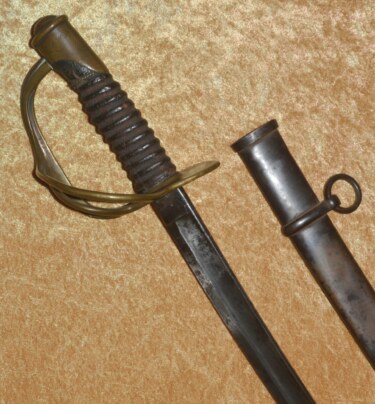 US M1860 Cavalry Saber
US M1860 Cavalry Saber